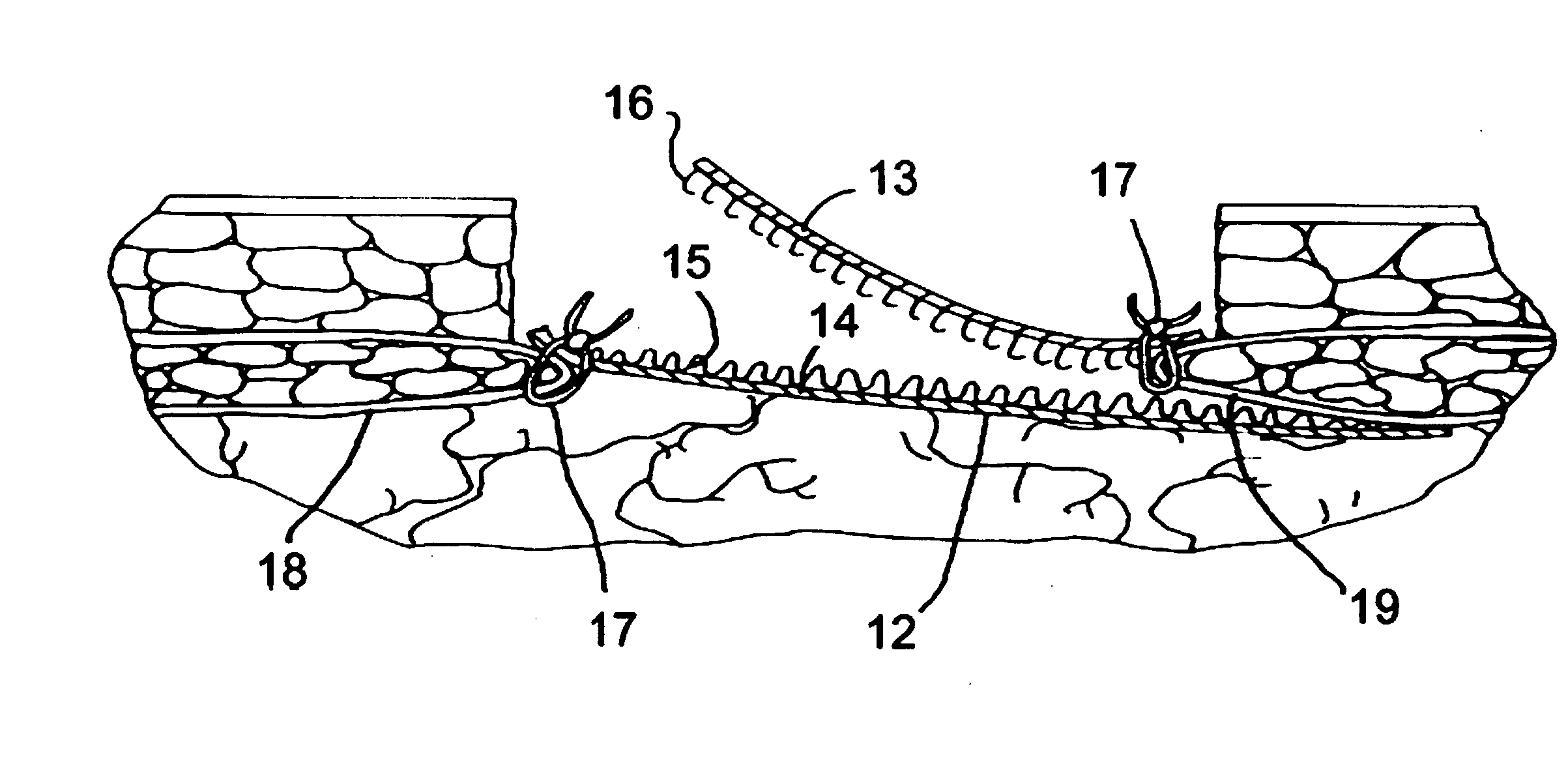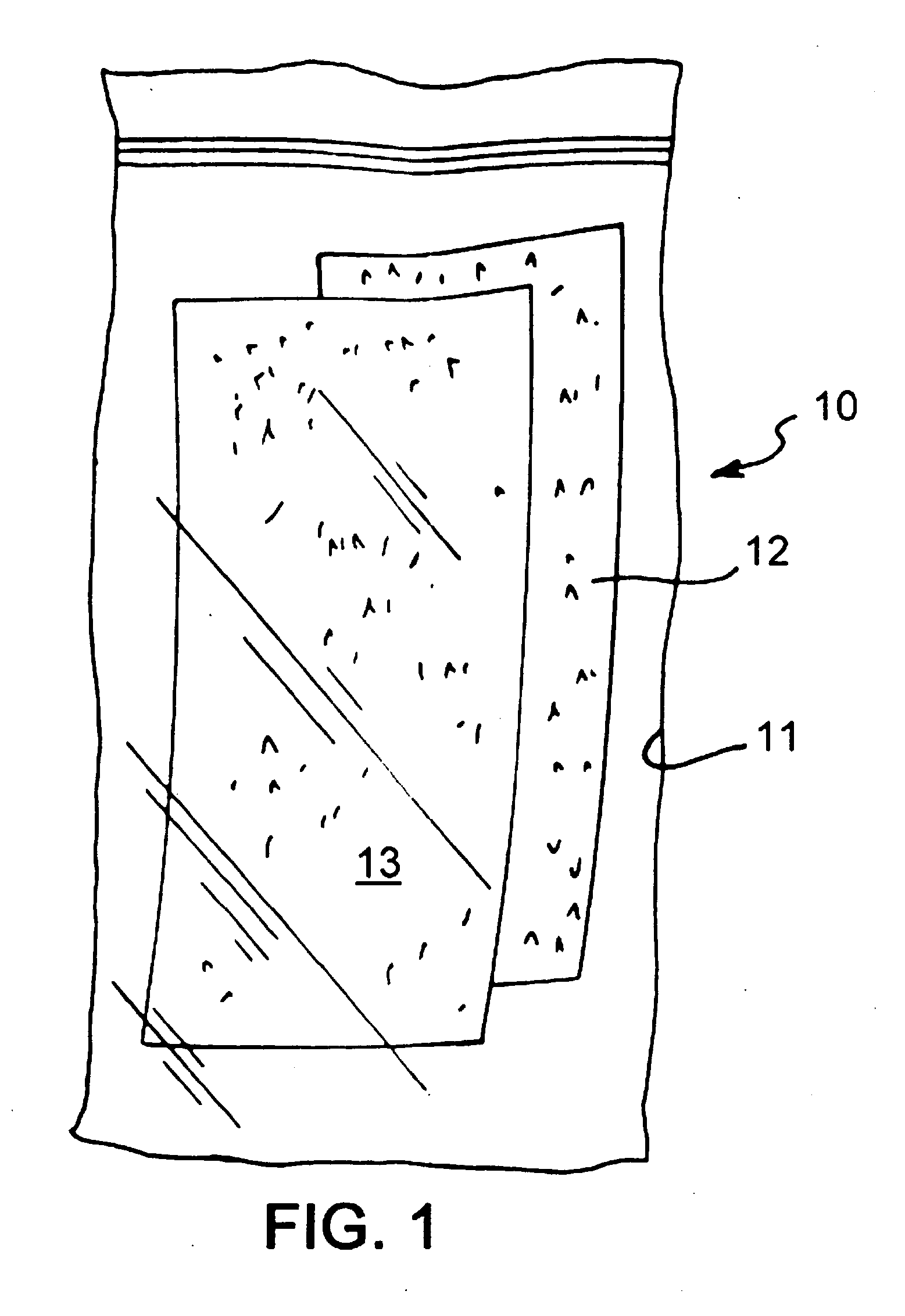Prosthesis and method for lowering abdominal pressure
a technology of abdominal compartment syndrome and abdominal plate, which is applied in the direction of prosthesis, application, snap fasteners, etc., can solve the problems of abdominal plate syndrome, sequential organ system dysfunction, tissue hypoxia,
- Summary
- Abstract
- Description
- Claims
- Application Information
AI Technical Summary
Benefits of technology
Problems solved by technology
Method used
Image
Examples
Embodiment Construction
[0037] In the preferred embodiment of the invention shown in FIG. 1, the prosthesis, or device 10 is stored in a sealed outer package 11 with a sterile interior which contains a sterile loop sheet 12 and a sterile hook sheet of micromushrooms or other hook like structures 13.
[0038] As seen in FIG. 3, the sheet 12, has a smooth bottom 14, and a top 15 consisting of multiple spaced filamentous looped anchors ("loops") rooted on said sheet, which is adapted to mate with the bottom 16, of the male sheet 13. Sheets 12 and 13 mate. The top 15, of the female sheet 12, is covered with "loops" and the bottom 16, of the male sheet 13, is provided with a multitude of "hook-like" protuberances (micromushrooms) that mate 15 with the looped surface to releasable bond the sheets 12 and 13 together.
[0039] The sheets 12 and 13 should be made of a biocompatible, easily sterilized fabric, which can be easily and securely sutured, and easily trimmed using conventional operating room instruments. Prefer...
PUM
 Login to View More
Login to View More Abstract
Description
Claims
Application Information
 Login to View More
Login to View More - R&D
- Intellectual Property
- Life Sciences
- Materials
- Tech Scout
- Unparalleled Data Quality
- Higher Quality Content
- 60% Fewer Hallucinations
Browse by: Latest US Patents, China's latest patents, Technical Efficacy Thesaurus, Application Domain, Technology Topic, Popular Technical Reports.
© 2025 PatSnap. All rights reserved.Legal|Privacy policy|Modern Slavery Act Transparency Statement|Sitemap|About US| Contact US: help@patsnap.com



